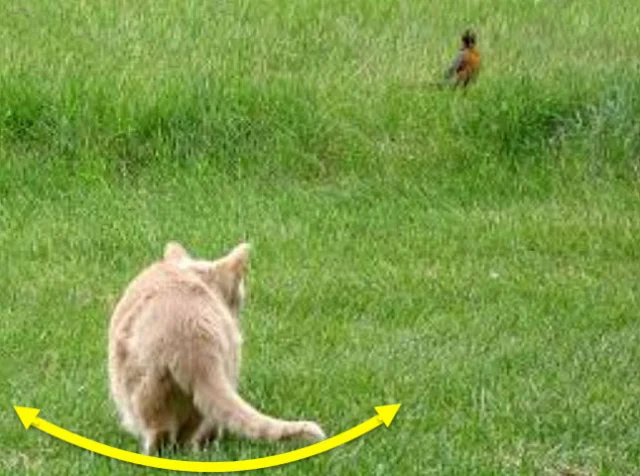A domestic cat may be more irritated than angry when they are wagging their tail because they are in a state of mental conflict. The cat wants to do two things at the same time and is unsure which is the best choice.
I remember seeing my late, now deceased, female cat sitting on a lawn where there was no cover for her to hide while she had a mind to stalk a bird. She wanted to chase the bird but did not have the cover to do it successfully and was in two minds whether to go or stay, and so she wagged her tail.
In another example, your domestic cat might like to go outside. You open the door and your cat encounters pouring rain and thinks twice about whether to go outside or not. Their mind is in conflict and this mental state is made visible in a wagging tail.
The interesting thing about a cat wagging her tail is how it originated. Desmond Morris, the well-known animal behaviourist and biologist, says that it originated from the fact that the cat's tail is a means of balance; the tail helps the domestic cat to balance.
You will notice that the tree dwelling wild cats have thick and long tails. The most noticeable tail on a wild cat is the rope-like tail of the snow leopard. The snow leopard has to negotiate very steep rocky slopes when hunting. You will notice that the snow leopard's tail moves from left to right all the time to help the cat to keep balance.
The argument is that the physical action of keeping balance through a swishing tale has evolved into an expression of the state of the mind of the cat when the cat's thought processes are in balance because he or she is uncertain about what to do next. Of course, not all cats all the time will be in this state of emotional indecision when stalking prey. It depends on the cat and the circumstances.
You can recognise the nice symmetry in the argument. Both physical and mental balancing is expressed in a wagging tail movement. It is really neat.


ليست هناك تعليقات:
إرسال تعليق
Your comments are always welcome.